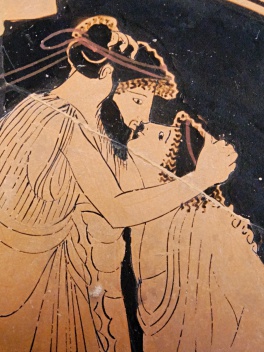Ephebophilia

Ephebophilia (also called hepephilia) is a sexual attraction to pubescent or adolescent individuals, and even to young adults. It is often used by boylovers wishing to distinguish an attraction to teenagers from an attraction to younger, pre-pubescent boys (described as pedophilia). A person with such attractions is called an ephebophile or hebephile. Hebephiles are commonly referred to as teen boy lovers or TBLs. In some contexts, the term hebephilia is used to signify an erotic interest in individuals in early adolescence, while ephebophilia is used to refer to the erotic interest in individuals in mid- to late adolescence; however, in most cases the two words are interchangeable. It should be noted that, until the late 20th century, ephebophiles and hebephilies were not typically differentiated from teleiophile homosexuals.
Etymology
The term ephebophilia comes from the Greek ἔφηβος (ephebos, variously defined as "one arrived at puberty", "a youth of eighteen who underwent his dokimasia[1] and was registered as a citizen [in Athens]", or "arriving at man's estate") and φιλία (philia, "love").[2] It has been used by Dutch psychologist Frits Bernard as far back as 1950,[3] and reprinted in 1960 in the gay support magazine Vriendschap under the pseudonym Victor Servatius,[4] crediting the origin of the term to Magnus Hirschfeld[5] with no exact date given.[6]
The term has been described by Frenchman Félix Buffière in 1980,[7] and by Pakistani scholar Tariq Rahman,[8] who argued that ephebophilia should be especially used with regard to homosexuality when describing the aesthetic and erotic interest of adult men in adolescent boys in classical Persian, Turkish or Urdu literature. The term was additionally revived by Ray Blanchard to describe adult, especially adult male, sexual attraction to 15 to 19-year-olds.[9] The term was originally used in the late 19th to mid 20th century.[9] [10]
References
- ↑ http://en.wikipedia.org/wiki/Dokimasia
- ↑ Rahman, T. (1988). Ephebophilia: the case for the use of a new word. 24. 126–141. doi:.
- ↑ http://www.nvva.nl/rijzendezon/catalogs/c00137.htm
- ↑ Bernard, F. (1998). Selected publications of Dr Frits Bernard - An international bibliography. Rotterdam: Enclave.
- ↑ http://en.wikipedia.org/wiki/Magnus_Hirschfeld
- ↑ Servatius, V. (1960, March 15). Ephebophilie en wetenschap [Ephebophilia and science]. Vriendschap, 35-35.
- ↑ Buffière, F. (1980). Éros adolescent : la pédérastie dans la Grèce antique, Paris, p.11.
- ↑ Rahman, T. (1990). Boy-Love in the Urdu Ghazal. 7. 1–20.
- ↑ Jump up to: 9.0 9.1 Blanchard, R.; Lykins, A. D.; Wherrett, D.; Kuban, M. E.; Cantor, J. M.; Blak, T.; Dickey, R.; Klassen, P. E. (2008). Pedophilia, hebephilia, and the DSM–V. 38. 335–350. doi:.
- ↑ http://en.wikipedia.org/wiki/Ephebophilia#cite_ref-springerlink.com_2-0